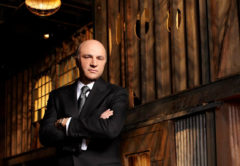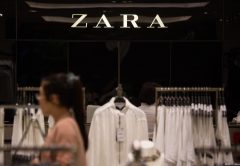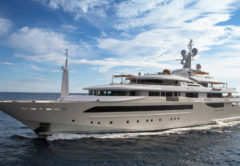Editor’s Note: Taghred Chandab, author of the travel website MyArabia.me and mother-of-three, published ‘The truth about one of the world’s most dangerous places’ on her blog in early January. The following post chronicles the Australian family’s journey in Lebanon.
“Would you like to come with me to Lebanon?” my father would often ask me when I was a teenager, as he planned his annual trip to his home country.
“No!” I’d reply arrogantly, shutting down any idea of traveling to that place so far away.
I’d heard the stories of girls returning home to be married off to a cousin who was only ever interested in getting an Australian visa — his ticket to freedom. As the years passed, my father stopped asking and I never broached the subject.
Shamefully, my youth was spent distancing myself from my Lebanese heritage. Lebanon was a tiny nation far away from Australia, where I was born and raised. It reminded me of my father’s strict Middle Eastern culture, one which shaped my lonely teenage years. Why on Earth would I want to be connected to the country?
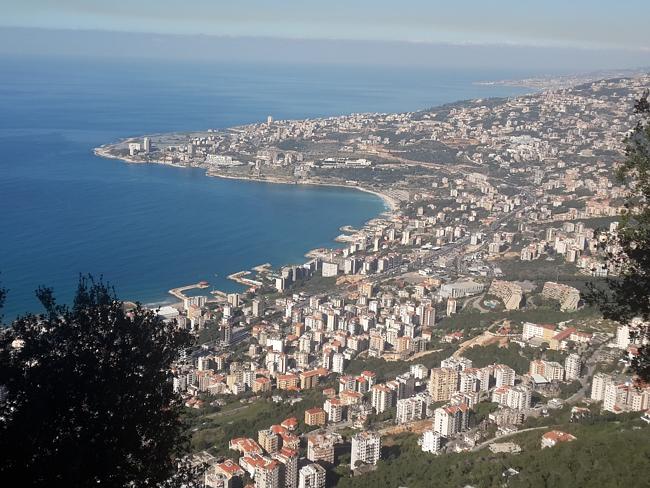
My father is from a small village in Syr el dannieh, in North Lebanon, 22 kilometers from the country’s second largest city, Tripoli, and several hours from cosmopolitan Beirut. Throughout my childhood I’d heard tales of gunbattles and family feuds — my uncle was once shot in the crossfire between quarreling neighbors.
But it turns out the Lebanon I’d imagined was a far cry from the real beauty of this small country, bordered by Syria to the north and Israel to the south, and situated at the crossroads of the Mediterranean Basin and the Arabian hinterland. Its rich history and cultural and religious diversity is a result of all these influences.
Like the millions of Lebanese expats scattered around the world, my parents left Lebanon at the beginning of the Lebanese Civil War in 1975. Before that, my mother says, Lebanon was compared with Switzerland, and Beirut was the “Paris of the Middle East”.
Like many other Lebanese, they had planned to return, but 40 years on they are still in Sydney. Fifteen years of civil war had created great divisions among religious and political groups that still stand today, making life difficult and even dangerous.
As I grew older and became more fascinated with Middle Eastern politics, the need to travel to my parents’ birthplace grew stronger. My first visit in 2011 with my husband and daughters was brief — just four days. I went to Syr, where I met my aunt and cousins for the first time.
Although it was difficult to do or see anything with my three small children, we still managed one important trip to my father’s property in the mountains. As the sun set over the snow-covered peaks, I knew I was exactly where I needed to be. In that moment, I promised myself that I would return to explore Lebanon fully.

Several months after that first visit back in 2011, the Syrian uprising began, and the hundreds of thousands of refugees spilling into the country had a profound impact on Lebanon. The United Nations estimates that today there are over 1 million Syrian refugees in Lebanon. My mother’s extended family escaped Homs in Syria and now live in Tripoli.
Lebanon is deeply divided over the Syrian war, creating further problems. In August 2013, a car bomb ripped through a busy shopping street in Hezbollah’s stronghold in the southern suburbs of Beirut, killing 21 people and injuring hundreds. It was the deadliest attack in the Lebanese capital since the 2005 assassination of the former Prime Minister, Rafic Hariri. And December 27, 2014 marked the first anniversary of the assassination in Beirut of former Lebanese finance minister Mohamed Chatah.
With so much unrest in Lebanon, I kept putting off my return. Until the moment when I decided that if the Lebanese people could bravely live through this tumultuous time, there was no reason why I shouldn’t return. Besides, giving in to fear would have meant giving in to the militants and political factions happily spreading hate and tearing a nation apart for personal gain.
‘A trip I’ll never forget’
A family wedding in Beirut provided the perfect excuse for a visit Lebanon in December 2014. And living in Dubai in recent years made it easier to travel there (from my previous base of Sydney it would have taken up to 19 hours to get to Lebanon — an effective discouragement).
So we went for it, we put our fate in God’s hands and booked five return tickets.
As we arrived in the capital of Beirut, I was taken aback by the strong presence of Lebanese soldiers posted on almost every street corner. Amid the Christmas decorations, colourful lights and Coco-Cola-influenced Christmas tree, it wasn’t uncommon to see tanks and armed soldiers posted in densely populated areas such as the Beirut Souks, a major commercial district with over 200 shops.
Sadly, the civil war left visible scars on the city’s tattered, bullet-pocked apartment blocks. Narrow streets make it difficult for cars to pass, so locals usually get around on scooters. Bed sheets replace windows in poorer areas where Palestinian and Syrian refugees are housed. Beggars line the streets.
Hussein, our tour guide, said Palestinians and Syrians are too proud to beg and the women carrying babies on the streets as a way of seeking sympathy are actually Gypsies who make a living scamming tourists.
Anyone who has ever been stuck on the border between Tijuana, Mexico, and the US will understand how it feels to have small children and women approach the car, bang against the window and demand money. I was confronted with this again while driving through the popular streets of Hamra in West Beirut.

Once we’d left the heart of Beirut, we headed north to The Cedars (Arz Libnan). The scenic drive took us through Becharre — the poet Khalil Gibran’s birthplace — to Qadisha Valley.
Located at the foot of Mount al-Makmal in northern Lebanon, the deep gorge is listed as a UNESCO World Heritage Site because some of the earliest Christian monastic settlements were situated here. I couldn’t believe this hidden treasure was in Lebanon, it’s one of the most beautiful spots you’ll ever see.
It’s steeped in history: At the entrance to The Grove stands a cedar tree believed to be hundreds of years old.
Tourists and locals flock to the area during the heavy snowfall period.
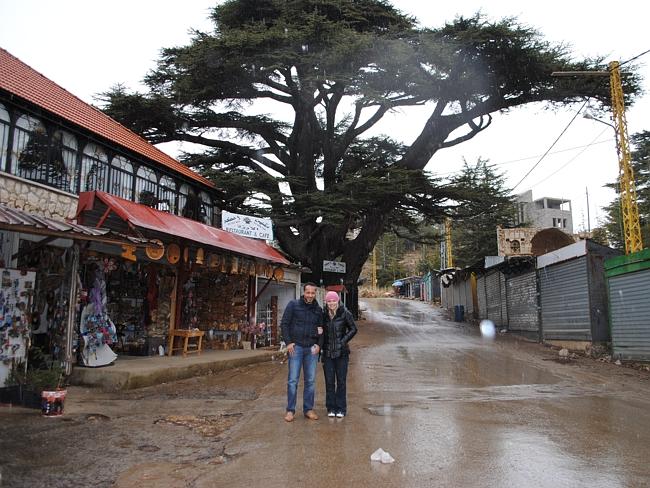
I wanted our next stop to be Baalbek, a town in the Beqqa Valley which contains some of the best preserved Roman ruins in Lebanon. But it wasn’t meant to be.
Despite my pleas, we were strongly advised by our family in Beirut and in Sydney not to visit another UNESCO Heritage Site. According to our relatives, I was at great risk. Militants have been known to target westerners traveling through the area.
“Your wife looks American,” one relative told my husband. “She’s an easy target for kidnappers,” another added. When you travel to a country where there are strong political and religious divisions, your best sources of guidance are locals and tour guides.
Instead, the next part of our journey took us to the city of Tripoli, where my mother grew up and where my relatives still live.
At nightfall the call to prayer echoed out from Al-Salam Mosque, where just 18 months previously a car laden with 100 kilograms of explosives had exploded, leaving a huge crater and the floors covered with blood. It was the second bomb to explode that afternoon; minutes earlier, the Taqwa mosque had been targeted. Dozens were killed and hundreds more injured.
Now, however, the mosque was packed with worshippers.
No one takes any chances these days. Armed Lebanese soldiers and tanks heavily guard Tripoli’s streets. Cars left unattended with the engines still running are always a great concern. Unlike Beirut, which has been partially rebuilt since the war to attract tourists, Tripoli is rundown and dirty. Old buildings destroyed during the civil war remain standing, a stark reminder of the city’s harsh history.
It was hard not to feel anxious, knowing I was just meters away from where one of the deadliest car bombings had taken place since the war. Even in Beirut’s city streets, you need to be alert. Remember that the country is still stricken with problems, and car bombs can go off unexpectedly at any time.
The next day, between family gatherings, we managed to sneak in another impressive tour. On this day our journey began in the valley, Nahr El-Kalb, 18km north of Beirut, and continued to Jeita Grotto, followed by Harissa, a small mountain village 650 metres above sea level, and ancient Byblos.
On the way to the grotto, we took a small diversion to a war memorial commemorating the Australian diggers who fought in World War II.
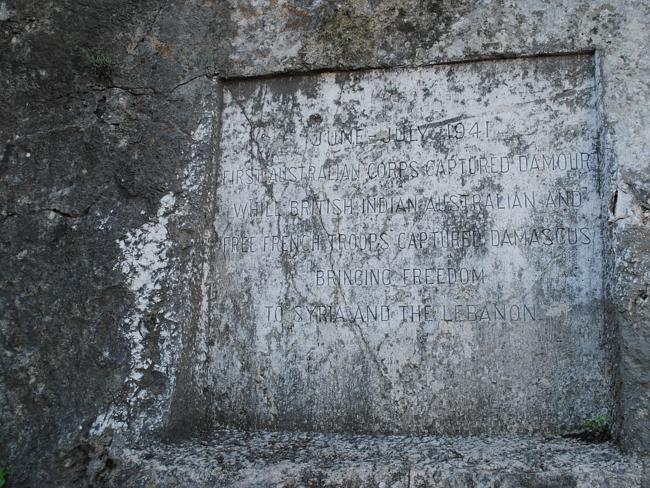
I knew little of the involvement of Australians in Lebanon during the war. Australian troops, part of the 7th Division, fought as part of an Allied force in Syria and Lebanon against the Vichy French. According to the Australian Lebanese Historical Society, the first Australian casualty was Nicolas Koorey, a 26-year-old Australian of Lebanese descent.
There were 416 Australian troops killed and more than 1000 wounded in the battle. It’s certainly a history lesson which needs to be more widely taught back home in Australia.
As we left the memorial, I felt moved and excited at the same time. Our next stop was Jeita Grotto.
Breathtaking. Captivating. Mesmerising. There are not enough adjectives to describe this natural wonder.
Millions of years are frozen in drops of water. A very frequent drop-by-drop water flow forms stalactites on the ceilings and stalagmites on the floor of the galleries and halls.
Recipient of the 2013 World Tourism Organisation’s award for best tourist site in the Arab world, the Jieta Grotto houses one of the world’s longest stalactites. It measures 8.2m!

This is a must if you’re travelling with children. My daughters wouldn’t stop talking about their “cave” experience, where they took turns to steer a small vessel in the lower grotto. The girls have travelled to many parts of the globe, including France and Italy, but nothing captured their imagination the same way their trip to Lebanon did.
We moved on to Harissa, the home of the important pilgramige site, Our Lady of Lebanon. The picturesque village is located 20km north of Beirut, and the best view is from the cable car, from where the city and the Mediterranean Sea look breathtaking.
Because of its religious significance, Harissa is often visited by Roman Catholic popes.
Then, finally, we visited the 8000-year-old city of Jbeil (Byblos), another 20km away from Harissa.
One of the oldest cities in the world to have been inhabited without interruption, Jbeil is now a tourist hub for its ancient port, fish restaurants and shopping at the traditional Lebanese souk. Oh, and the Byblos Castle!

There’s no doubt this was one of the most emotional journeys I’ve ever taken. I rediscovered myself and reconnected with my Lebanese heritage. While this tiny nation attracts so many negative mentions in the media, few could believe how deeply enriched it is with history and beauty.
I wish I’d known it earlier.
Visit Chandab’s Instagram account @arabianmum to see all the images from her trip to Lebanon, or follow her on Twitter: @my_arabia or Facebook accounts.



